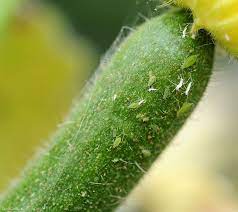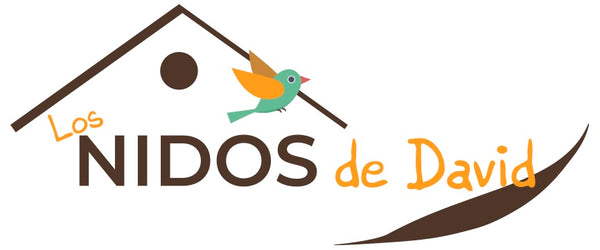Biological pest control
What do we mean by plague?
A pest is defined as any living organism or group of living organisms (insects, fungi, viruses, bacteria, mammals, etc.) that can cause damage to plants, trees, crops, etc., and that has an impact (primarily economic) on humans. Naturally, all natural ecosystems maintain a balance, maintained primarily by two large groups: predators and prey. Predators are responsible for stabilizing a population if it grows too large. But when humans interfere with the fragile balance of these ecosystems, the number of predators is reduced or some species even become extinct. The balance is disrupted in favor of the prey, as predators have decreased or disappeared, and thus pests appear.

What is biological pest control?
The paradigm shift in agriculture
The agricultural production models developed in recent decades have been primarily based on the practice of monoculture . Monoculture allows for greater profits and minimizes the amount of tools and machinery needed, but it also entails specific problems such as soil depletion, due to the overuse of the same nutrients; soil and groundwater contamination due to the overuse of plant protection products and pesticides; and greater exposure to pests and diseases, which are more difficult to combat due to the loss of biodiversity.

As an alternative to conventional industrialized agriculture, agricultural models have been developed based primarily on respect for the environment and the production of healthier foods. One such system is organic farming , which focuses on adopting the following measures to prevent pests and diseases in crops:
- Selecting hardy species: Choose plant varieties that adapt well to the environment in which you plan to grow them, as they will grow stronger and more resistant.
- Improve cropping systems: Mixed cropping systems, crop rotation, and green manure are most beneficial for reducing pests and diseases.
- Add organic matter: add microorganisms to the soil, which promote aeration and make nutrients available to plants.
- Maintain natural enemies of pests: they exert biological control over pathogens.
- Planning a crop calendar and appropriate densities can reduce the incidence of pests.

Even if we correctly implement pest and disease prevention measures in organic farming, they may not be enough to prevent the development of these problems affecting the health of crops and plants. When these develop, measures should be aimed at eliminating them, which can be done through biological pest control . There are different methods within biological control, such as the use of bacteria, fungi, and the production of natural pesticides. But what concerns us here and what we are going to discuss is biological pest control through natural predators .
The role of useful fauna in biological pest control
The role of insectivorous birds, birds of prey, bats, and some insects in pest control is still largely unknown, but above all, it has been underestimated by farmers, despite their highly effective role in the functioning of natural ecosystems. A brief study of the diets of birds and bats reveals their importance in controlling natural enemies of crops. For example, blue tits and great tits feed on certain insects, such as:
- Those that appear in fruit tree crops, such as the caterpillars of the Codling Moth ( Cydia pomonella ); the Peach Moth ( Grapholita molesta ); Anarsia ( Anarsia lineatella ), one of the most important pests in stone fruit trees, whose larvae cause damage to the terminal shoots and the fruit; the Fruit Fly ( Ceratitis capitata ); aphids, such as the apple aphid ( Eriosoma lanigerum ) and many more.
- Those that appear in pine forests, the Processionary caterpillar ( Thaumetopoea pitiocampa ).
- Etc.
Other bird species to consider in the ecological fight against pests are:
- Small nocturnal and diurnal birds of prey, such as the kestrel, the little owl, or the barn owl, which feed on rodents and insects like grasshoppers, crickets, mice, and moles.
- Swallows: They feed on flying insects, such as flies and mosquitoes, butterflies, aphids, etc.
- The hoopoe: feeds on orthopterans (grasshoppers, locusts, crickets), coleopterans (beetles, ladybugs), earthworms, etc.

- Bats: They feed on a large number of nocturnal insects and have a crepuscular activity that coincides with the maximum nocturnal activity of flying moths. They also feed on harmful moths, such as the codling moth ( Cydia pomonella ), the peach moth ( Grapholita molesta ), the Anarsia ( Anarsia lineatella ) and the bunch moth ( Lobesia botrana ). A single bat can eat between 2,000 and 3,000 insects in a single night.
There are some insects that also have a predatory function, such as the ladybug larva or the lacewing, great predators of aphids, among others.
Why use nest boxes for pest control?
Nest boxes are artificial shelters created for birds or bats to nest inside when there are not enough cavities in the surrounding area. In order to increase the population of natural predators, control pests, and restore natural balance, nest boxes can be placed around crops specifically to provide these birds and/or bats with suitable cavities in which to nest.
For all species that can help us with pest control, there is a specific nest box, which allows us to recreate the habitat and breeding conditions required by the species we want to promote.
Thus, we find nesting boxes for:
- Insectivorous birds : mainly blue tits and coal tits.
- Kestrel
- Owl and owl
- Bats
- Hotels for insects and butterflies
If you're interested in installing our nesting boxes in your crops as a pest control method, we offer our advice and a no-obligation quote.
CONTACT
